Best Austin Moving Company
Let’s Make This Move Fast, Fun & Affordable
- Loading / Unloading
- Shrink Wrap & Tape Included
- Use of Blankets & Pads
- Packing / Unpacking Services
- Furniture Disassembly/ Reassembly
- Hauling & Removal
- Long Distance Moving
Let’s Make This Move Fast, Fun & Affordable
Hourly Pricing
Locally Owned & Operated
Free Estimates
Satisfaction Guaranteed
Offers Insurance
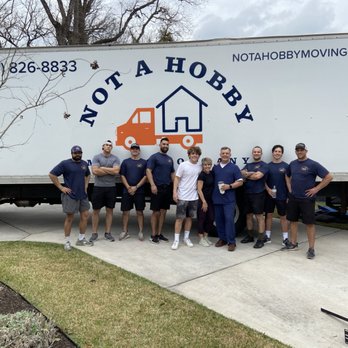


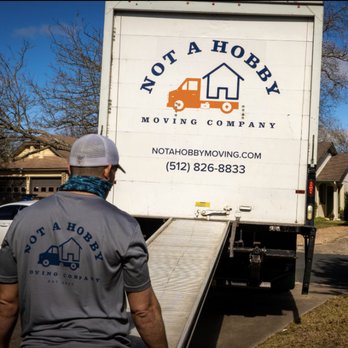

Not a Hobby Moving – Austin Movers is the leading full-service moving company in Austin, TX. We provide our clients with a stress-free moving experience – how moving should be!
Moving across town? Let our expert team members make local and long-distance moves easy with all Not A Hobby Moving options.
If you are looking for an apartment, residential, or long-distance moving company in Austin, TX, call us at Not A Hobby Moving for our full-service options. We make Austin moving easy and affordable with our free quote for moving services – what are you waiting for?
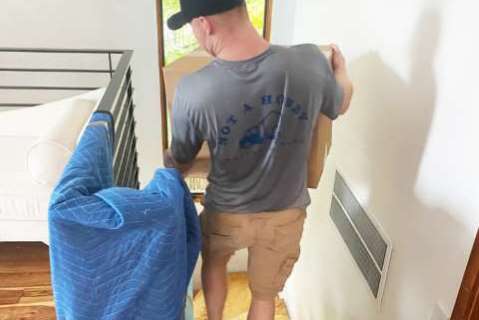
Moving to or from an Austin, Texas apartment? Our highly qualified team members can navigate stairs, narrow hallways, and awkward angles. With a white-glove moving service, you can enjoy knowing your items are in good hands. Not A Hobby Moving makes Austin apartment moving easy, affordable, and reliable.
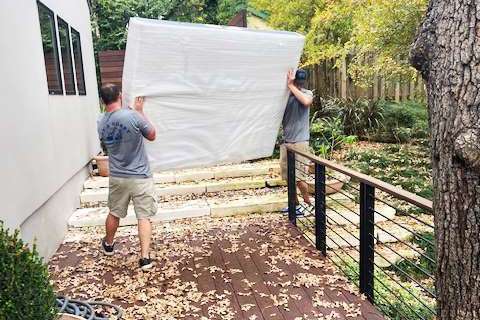
Are you looking for Austin movers to relocate your family? Not A Hobby Moving can handle homes of any size - one bedroom to five or more! Let our moving team members pack your belongings and move them safely and securely to your new home. Once there we unpack and let you get settled in.
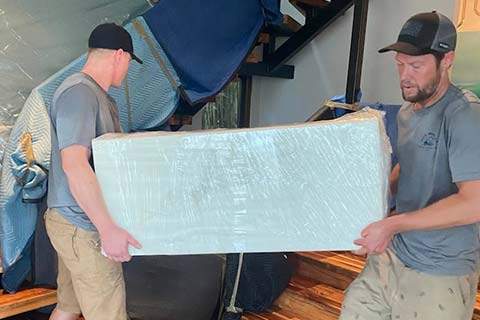
Have you rented a new office in Austin for a personal business? Are you a business owner transferring buildings or an employee needing to relocate to a new office? Do you need to remodel your Austin office or commercial building? Our moving team will ensure your office equipment and furniture is safely moved to your new business space.

Full-service moving includes premium packing and unpacking services. Not A Hobby Moving brings the supplies, including shrink wrap, tape, furniture disassembly, and reassembly. Making your moving experience stress-free. Only found with your Austin, TX moving company, and our specialized team members.
 Why Choose Us?
Why Choose Us?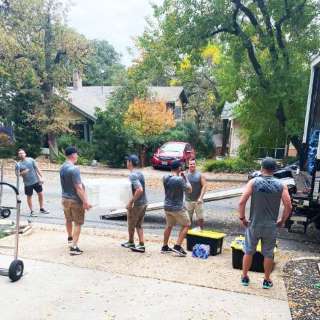
Not A Hobby Moving was founded in 2020. Together we bring over seven years of experience in the moving industry to our business. We are proud to serve our Austin community and all the surrounding neighborhoods – and the state of Texas.

Our moving professionals use the highest standards of safety during your move. Using the OSHA safety standards, our team members follow the federal regulations and use them to ensure not only the safety of our team but our clients as well.

Not A Hobby Moving is available for our clients 24 hours a day, 7 days a week. We provide these services because moving is not always easily facilitated during business hours.
Movers are in charge of taking everything out of your old home and safely transporting it to your new home. You need to be able to depend on them to have the utmost respect for your belongings, which requires the company you chose to have positive attributes. Here are the qualities to look for in a good moving company.
A professional moving company is in charge of ensuring all your things are safe. If anything goes wrong, the company has insurance that will pay you for the damage.
Moving companies that you can trust will give potential customers free estimates. You can always get free quotes from them to help you figure out how much it will cost to move. You can quickly get quotes from multiple moving companies, compare prices, and choose the one that is safe, quick, and cheap.
They give you time to do other important things. Furthermore, they should not expect payment upfront or accept cash only.
Reputable movers pay attention to every detail, giving you peace of mind that the move will be done carefully and professionally. The people who work there are polite and do their jobs well. During the move, they are always in uniform and provide great customer service. They pay close attention to every detail, from packing to transporting to unloading.
Expect a good moving company to have strong communication skills. You should be able to ask them questions and make requests without incidence. Further, they should respond promptly or call back quickly when you call or text.
Read what other people have said. Every business will probably get one or two bad reviews, so keep an eye out for reviews that seem unfair or unjustified. However, many bad reviews can be a sign of bad service.
Moving companies should have a history and years or decades of moving experience. New companies can build experience, but older companies know how to do the job right the first time.
Every company will have a different hourly rate, often based on the local economy. Rates will also change depending on the length of the move. Local moves cost less than long-distance moves. Local relocation typically costs between $25 and $50 per mover per hour when handled by professional movers.
Depending on the size of the apartment, house, or commercial building, the rates will change as well. For instance, a studio apartment may be as low as $120 an hour, while a five-bedroom house may cost $350 an hour. Check with the moving company to ensure this price includes the base cost, mileage, fuel, equipment, and movers.
While summer is the best time to move because kids are out of school, and families have more time to pack and move. During the months of June, July, and August, people need movers the most, which means companies charge the most and are less likely to offer deals. If you want to move for the least amount of money, try to move outside of the busy moving season.
Save the most money between September and April or the off-season. This window of time avoids both the busy moving season in the summer and the busy moving season in the fall, up until the beginning of September. During this time, people move out most because their leases are ending. Prices can drop by thirty percent!
Some moving companies will be willing to negotiate a bit on price if you choose to move at a less busy time or if you can move whenever it works best for them. If you can change your plans to fit theirs, you can always ask for a small discount or moving coupons.
If you are moving locally and the movers charge by the hour, it is best to move when there are not many people around. That is, it would be best if the moving truck could get to the first place as early as possible and be on its way to the next place before 3 p.m. If your movers charge by the hour and your moving truck gets stuck in traffic, you will have to pay for that time.
Movers are busiest on weekends, including Fridays, because people do not want to take off work if possible. If you can afford the time off work and move between Monday to Thursday, you can save some money. But most moving companies have the same prices no matter the day of the week. However, you can always ask for a cheaper rate during these times, as movers like to keep their schedules full.
Start your search for the best movers by looking for recommendations from neighbors, friends, and family. Additionally, use the internet to your advantage to look up reviews on Google, Yelp, and the BBB. There are a lot of moving companies out there, and you need to do your research to find the one that will meet your needs the best. If you are moving across the country, for example, you will want to find the best long-distance moving companies that have experience with interstate moves.
Many people transitioning from one home to the next request movers pack and unpack for them to reduce the stress. Another popular service including hauling unwanted items to the dump or for donation. Finally, many people pay more to have their furniture disassembled and reassembled.
Professional movers who are good at what they do offer extra services. Additional services are all the other things a moving company can do for you besides moving your things from one place to another. You will have to pay extra for these extras, and the price will depend on the service. But they can make moving day easier for you by giving you less to do.
You probably already know that moving companies can help you pack your things. But did you know that your mover can also set up services to help you unpack for an extra fee? A crew will come to your home and unpack all the boxes, put your things in closets and cabinets the way you want, and take away all the packing materials.
People often have unusual items like pianos or hot tubs that will not fit with the rest of their stuff on the moving van. A good professional mover will also be able to help you move items that are hard to move or have a high value. A good mover should be able to do it, whether they bring more people or use a crane to lift big pieces from your balcony. However, you can expect to pay more to move these items.
Most people forget they need to unplug appliances which can take some work, especially on washers and dryers. The cords need to come separately and often need to have water and dust removed, requiring extra time and tools. Removing the hose from the washing machine incorrectly can lead to pipe damage which is why it’s best to have professionals handle appliance assembly on both sides of the move.
Additionally, they need to be taken apart before professional movers can move refrigerators, washing machines, dryers, barbecues, and other large appliances. So, if you are unsure how to disconnect electrical or gas appliances, it might be best to let professionals do it.
The movers may need to set up a rope-and-pulley rigging system to take your heavy furniture and appliances in and out of your old or new home through a window if they are too big to fit through the doors, hallways, or stairs. Because of the complexity and risk involved in providing this additional moving service, the price will increase.
Movers are willing to go to more than one location to pick up items. For instance, if you need to pick up the item from a storage unit or a family member’s home, movers can help. Also, if you need some items dropped off at a different location than the rest of your items, they may be willing as well. If this is the case, your movers likely offer split pickup and delivery services for an additional fee.
People searching for movers in Austin, Texas, searched mainly for the best moving company, cheapest movers, Austin movers, and piano movers. The word variation changed slightly, but overall, customers want an affordable mover.
Families and individuals in Austin are reporting moving companies as professional, punctual, and efficient. Furthermore, many people said local movers are quick to respond to communication and came recommended by friends. They love the free estimates and the value for their money.
Depending on the size home you are moving out of, the number of movers you will need changes. Here is the normal number of movers per home size:
If you need to move within a set time, you can request more movers to make the work quicker. Of course, you can anticipate a higher cost if you request more movers. Commercial moves will require more movers and a longer period of time, depending on the size of the office.
The amount of time depends on how many movers there are and the number of items. However, there are averages most moves fall into for loading and unloading your belongs:
Larger homes have more distance to cover and can create more obstacles. Also, consider the route from your home to the moving truck. The more hindrances between the two will increase the move time by an hour or two. For instance, if your apartment is on the third floor and your apartment is not near the parking lot, you can add additional time to your move.
We are open and serving our moving clients in Austin, TX during the pandemic. We have put specific protocols in place to help keep our moving specialists and our clients safe during this time. We encourage contactless interactions and promote social distancing between our movers and clients. The CDC provides guidelines for proper hand hygiene and the use of cloth masks for protection.
Please help us by using CDC guidelines during this time for a smooth transition and moving experience. Together we can make your move safe.
Not a Hobby Moving – Austin Movers is located at 7124 Quimper Ln, Austin, TX, 78749, US. From Austin-Bergstrom International Airport (AUS) take Hotel Dr to State Hwy 71 W/E Ben White Blvd and then continue on State Hwy 71 W/E Ben White Blvd. Take US-290 W to Frontage Rd/S Mopac Service Rd. Take the exit toward William Cannon Dr from TX-1 Loop S and then merge onto Frontage Rd/S Mopac Service Rd. Turn right onto W William Cannon Dr and then turn left onto Ridge Oak Rd. Turn right onto Quimper Ln and then Not a Hobby Moving – Austin Moving Company will be on the left.
We’re open Every day 07:00AM – 08:00PM.
For additional questions you can call us at (512) 826-8833 or you can find us on Yelp